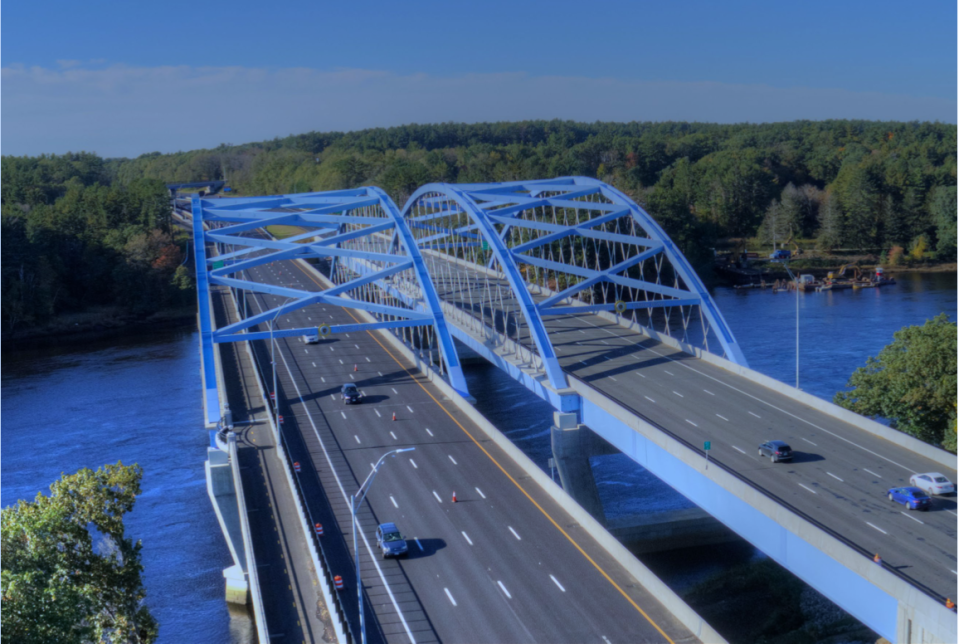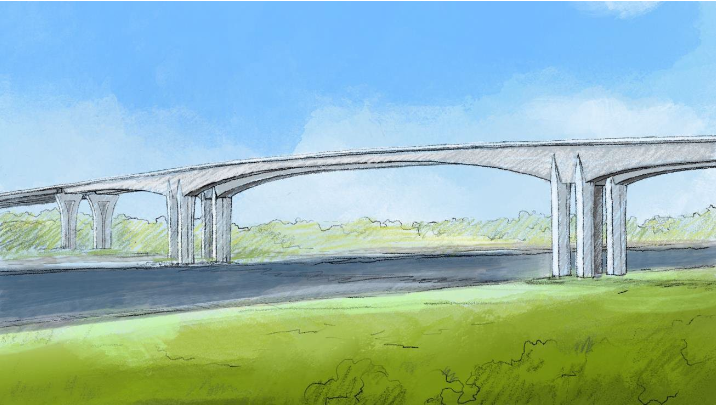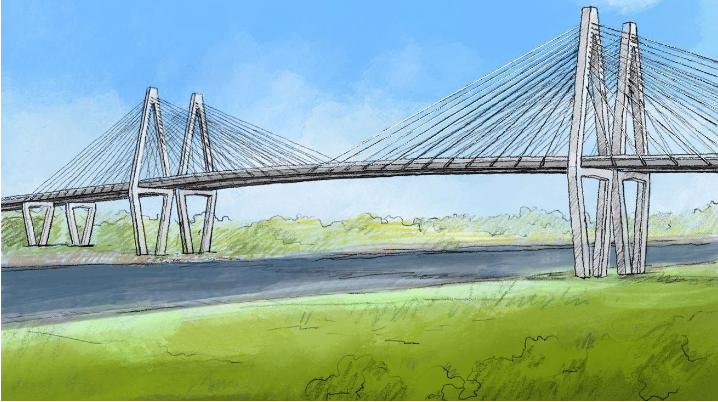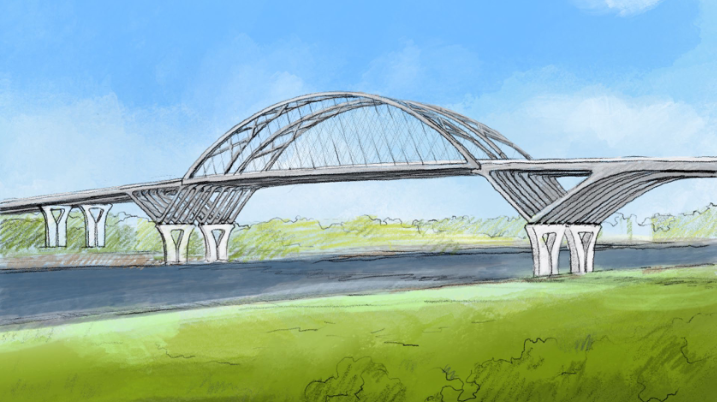What could new Bourne and Sagamore bridges look like?
The lead designer for the planned replacements to the Bourne and Sagamore bridges said twin spans would be the best way to go because they would take traffic off the existing bridges the fastest.
John Smith made his remarks during a Nov. 17 virtual public hearing about replacing the bridges, which was hosted by the Massachusetts Department of Transportation (MassDOT).
The 85-year-old bridges, which have become iconic Cape Cod landmarks, play a critical role in connecting the Cape's nearly 230,000 residents to the rest of Massachusetts and bringing millions of visitors to the region annually. But the structures have been deemed functionally obsolete and must be replaced.

In 2020, the MassDOT and the U.S. Army Corps of Engineers officially joined forces to work together to replace the bridges and to go after federal funding to cover the costs.
Since then, the cost of replacing the bridges has risen to around $4 billion due to inflation. It was originally estimated to cost around $1.5 billion.
Twin bridge design for Bourne and Sagamore bridges
At the Nov. 17 meeting, state transportation officials presented a few potential bridge designs and spoke about the pros and cons of each. Smith said twin bridges would be the most advantageous way to construct new bridges, meaning there would be a separate bridge for each direction of traffic.
The twin bridge option provides the fastest way to get traffic off the existing bridges, said Smith. The design also allows for the best traffic flow during construction, preserves local connections and is more structurally efficient, he said.
Twin bridges would be side by side, each carrying a single direction of traffic.
History:Sagamore, Bourne bridges have brought prosperity, loyalty and now worries to Cape Cod
Using the Bourne Bridge as an example, a new bridge would be built a safe distance away. Once the first bridge is completed, the existing Bourne Bridge would be demolished, and the new bridge would take inbound and outbound traffic temporarily.
A second bridge would be built next to the new one and once finished, each bridge would solely be responsible for traffic in one direction.
Smith presented three different potential bridge types that could be used for the new Bourne and Sagamore bridges.
Box girder bridge design

This bridge type has a concrete box shape structure as a foundation below the roadway and would have no overhead structure. Such bridges are massive and would increase costs. This bridge type requires a large foundation, which would increase construction risk.
Such bridges are the best in high winds. The concrete material also makes bridge construction more sensitive to cold weather.
Cable Stayed bridge design

A cable-stayed bridge is supported with cables coming down to the roadway, which in appearance is greatly different than the existing bridges. The Zakim Bridge in Boston is an example of this design. All the cables and the twin bridges make for visual clutter, Smith said.
Cable-stayed bridges make it difficult to add on and off ramps and are vulnerable to the wind during construction, he said.
Arch structure bridge design

The arch structure is similar to the existing bridge style, Smith said.
The arch is shorter than other bridge types, so it's easier to accommodate on and off ramps. Arch bridges would have the smallest project footprint, said Smith. The arch could be built off-site and floated into place.
Public voices concerns over disruptions caused by construction
Most public comment so far has been about how construction will affect local traffic and about noise and dust from the construction, Smith said.
“I just want to assure everyone that when we looked at potential bridges and potential bridge configurations to cross the Cape Cod Canal all our planning was based on maintaining two lanes in each direction at each crossing all during construction,” said Smith.
Smith said construction of the new bridges won't affect local roadway connections to the existing bridges.
Safe driving:Which Cape Cod intersections have the most crashes? What the data says
MassDOT and the U.S. Army of Corps of Engineers are still focused on securing money for the project, and expect to hear back on grant applications soon, said Bryan Cordeiro, project manager.
In September the federal government dealt a blow to those efforts when it denied the Army Corps’ application for INFRA — officially, Nationally Significant Multimodal Freight and Highway Projects — grant money, one of two bids to secure more than $1 billion.
At the time, U.S. Rep. William Keating, D-Mass., said that the INFRA grant was not a great fit for the bridge project but the Corps applied anyway hoping to get even a small amount of money for the bridge project.
Offshore wind industry:Cold wind blows on proposed offshore cable landing at Dowses Beach
A more important source of funding for the bridge replacement project, Keating said, is the Mega grant — officially, National Infrastructure Project Assistance. At the time, he said, that grant award will be announced in the next couple of months and is a much better fit for the project.
The Mega program supports large, complex projects that are difficult to fund and generate economic, mobility or safety benefits, according to the U.S. Department of Transportation.
Additionally, the federal government is required by statute to replace the Bourne and Sagamore bridges, he said. There remain many pools of money the Army Corps and MassDOT can go after and the INFRA round of funding is a small piece of the pie, Keating said.
MassDOT seeks public comment on the bridge design options
MassDOT seeks public comment on the bridge design options and will be hosting further meetings in early 2023. Members of the public can make comments on an electronic form by visiting https://pima.massdotpi.com/public/comment/project-comment-dynamic?project_id=13868
Comments will be accepted by email at this address: MassDOTMajorProjects@dot.state.ma.us.
The public can also take a survey of the proposed bridge types at: https://pima.massdotpi.com/public/s123-registration/search?project_id=13868&s123_id=f809bf1f18db448b94aa3fbc497c5cae
Contact Asad Jung ajung@capecodonline.com. Follow on Twitter @asadjungcct.
Gain access to premium Cape Cod Times content by subscribing. Check out our subscription offers.
This article originally appeared on Cape Cod Times: MassDOT eyes bridge design options to replace Bourne, Sagamore bridges

